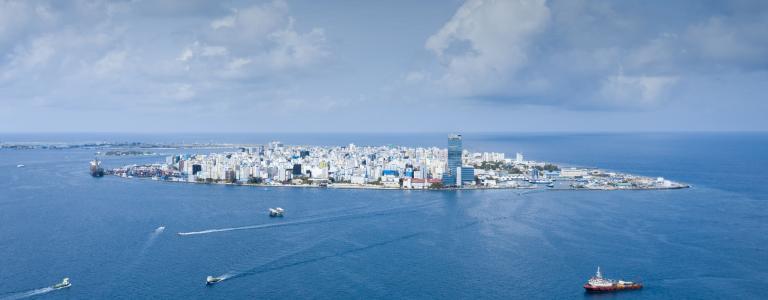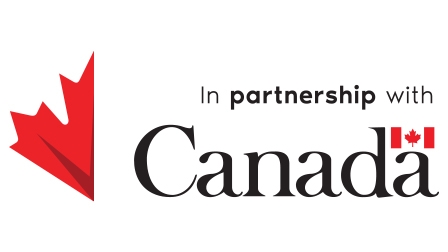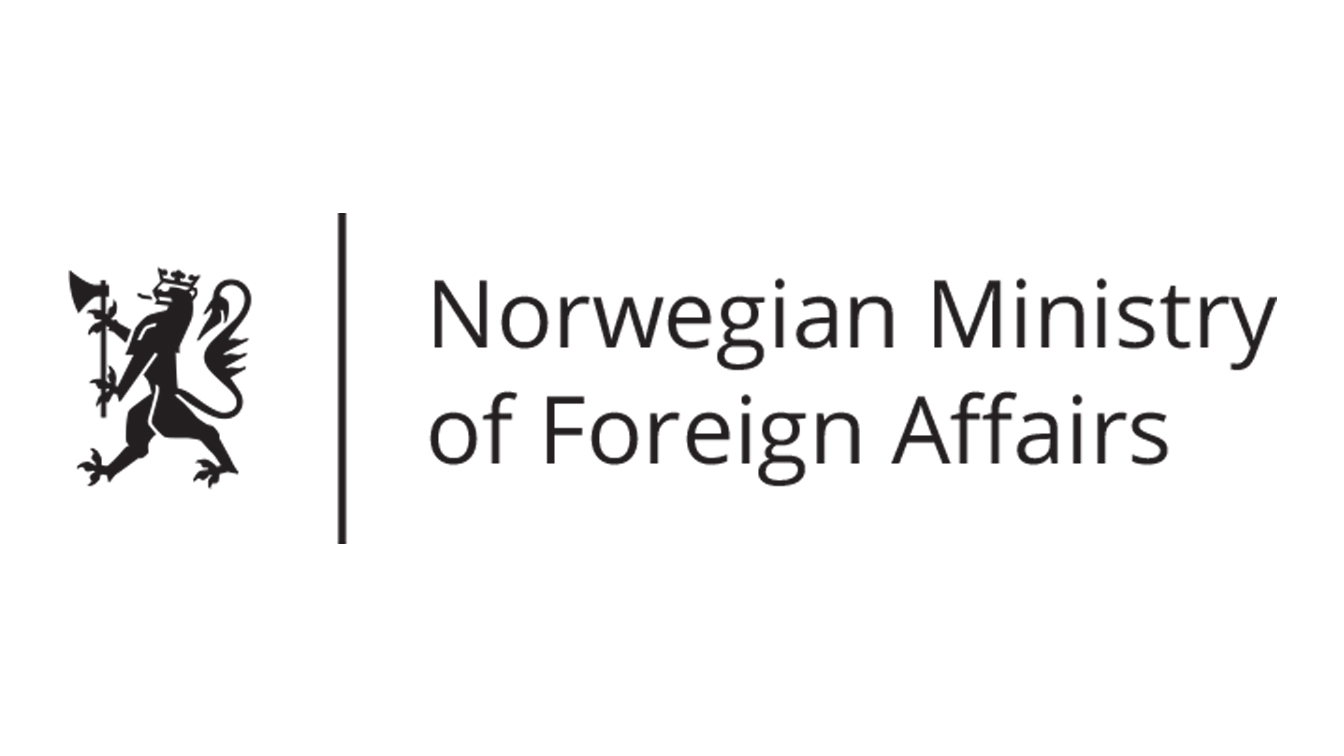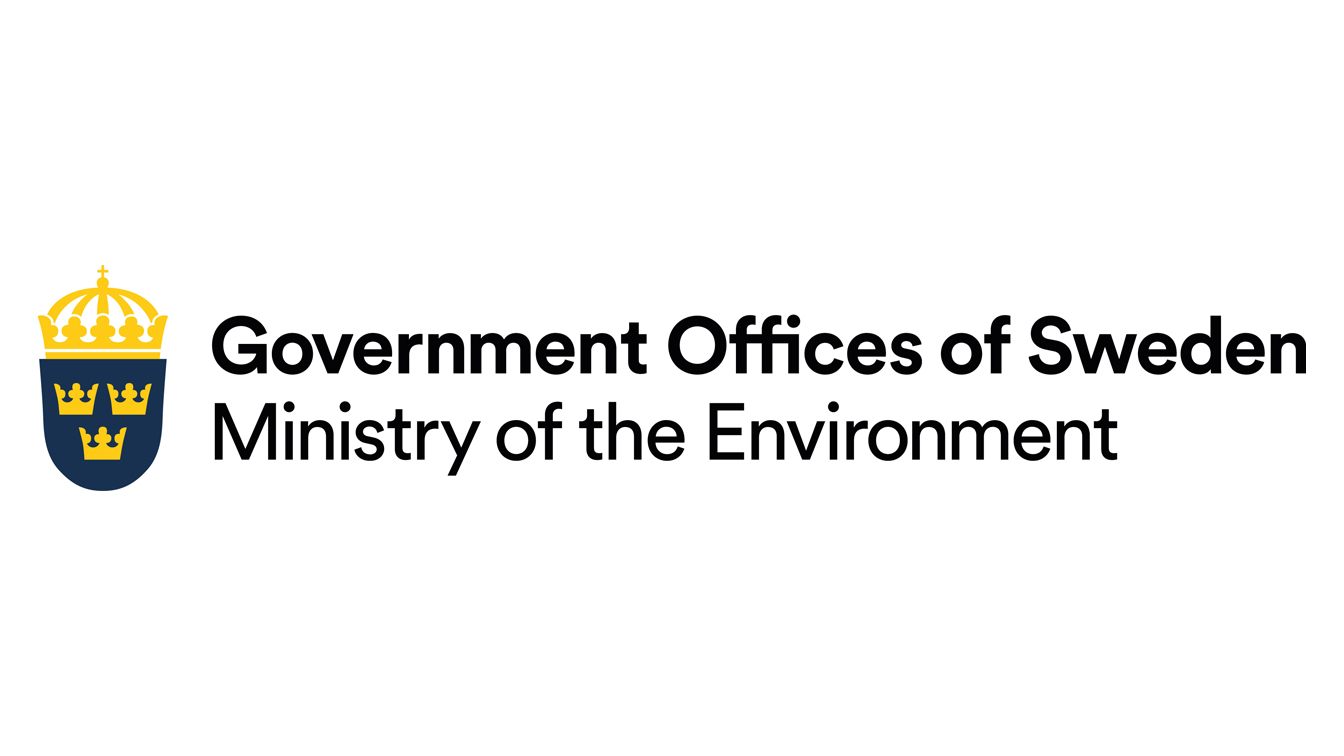Small Islands, Large Oceans: Voices on the Frontlines of Climate Change
Still Only One Earth: Lessons from 50 years of UN sustainable development policy
Small island developing states are particularly vulnerable to climate change, natural disasters, and external economic shocks—such as the impacts of the pandemic. For SIDS to survive climate change and COVID-19, we need to adopt an integrated approach that promotes economic diversification, innovative financing instruments, and scaling up the “blue economy.” (Download PDF) (See all policy briefs) (Subscribe to ENB)
In 2009, Maldives President Mohamed Nasheed convened an underwater cabinet meeting to draw attention to the plight of small island developing states (SIDS) in the face of climate change as “a symbolic cry for help.” While underwater, he wrote on a plastic slate: “We must unite in a world war effort to halt further temperature rises” and “climate change … threatens the rights and security of everyone on Earth” (Omidi, 2009). The meeting, which passed a resolution calling for global action to cut carbon emissions, garnered significant media attention as photos and video of cabinet members in scuba gear were broadcast around the world. It took place just prior to the Copenhagen Climate Change Conference, where President Nasheed was given a standing ovation after he passionately spoke about the threats to his country. More than 80% of the Maldives is less than a metre (3.3 feet) above sea level (Omidi, 2009), with rising seas threatening its very existence. For the Maldives and others like it, climate change is a matter of life and death.
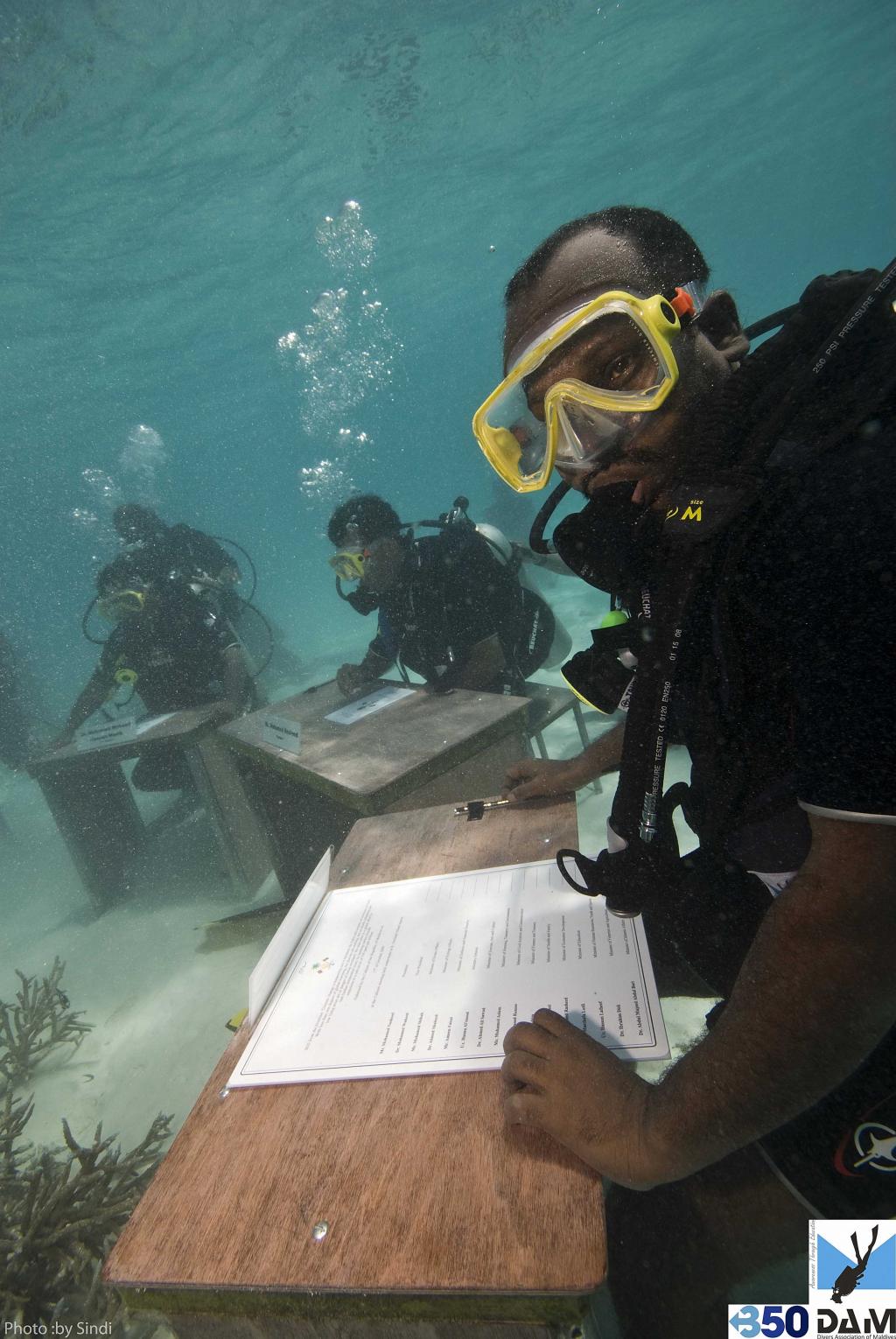
SIDS are on the frontlines of climate change. They feel the impacts first and most severely, yet they contribute less than 1% of global carbon emissions. They are vulnerable to hurricanes and cyclones, which are becoming more frequent and extreme, causing economic and environmental devastation, not to mention loss of life. Their dependence on food and energy imports, and tourism revenue, increase their vulnerability to external shocks, such as the COVID-19 pandemic.
So how can SIDS better prepare for and increase their resilience to climate change and achieve sustainable development? What opportunities does the post-COVID recovery phase offer for SIDS?
What Are SIDS and What Makes Them Vulnerable?
Often geographically remote and low lying, vulnerable to environmental challenges, and small in both size and population, SIDS span the globe. They represent a range of geographical and socioeconomic contexts. The Pacific island of Tuvalu is only 26 km2 in land area and just 1,600 people call Niue home. Papua New Guinea, on the other hand, has more than 460,000 km2 in land area, while Cuba has over 11 million inhabitants (UN-OHRLLS, 2013). Combined, SIDS have a population of approximately 65 million, slightly less than 1% of the world’s population; one-third of which live on land less than five metres above sea level, leaving them vulnerable to storms and sea level rise (UNDP, 2017).
Some SIDS, including Haiti, Comoros, and Tuvalu, are considered least developed countries (LDCs). However, most are classified as middle-income countries, with a gross national income (GNI) per capita of between USD 1,036 and USD 12,535, according to the World Bank. Some debate exists whether high-income SIDS, with more than USD 12,535 GNI per capita, should be able to access additional financing given their particular vulnerabilities. In addition, many upper middle-income SIDS fear they will lose their access to concessional financing, despite being highly vulnerable to the impacts of climate change and natural disasters.
Most SIDS are highly dependent on food imports, with 50% importing more than 80% of their food (UN DESA, 2020). However, energy accounts for the highest share of imports to SIDS, which are almost entirely dependent on fossil fuel imports for electricity generation and transport (IRENA, 2017). Trade accounts for more than 71% of SIDS’ gross domestic product (UN DESA, 2020). They are also dependent on tourism, and experience difficulties in managing and responding to shocks given the lack of diversity in their economies.
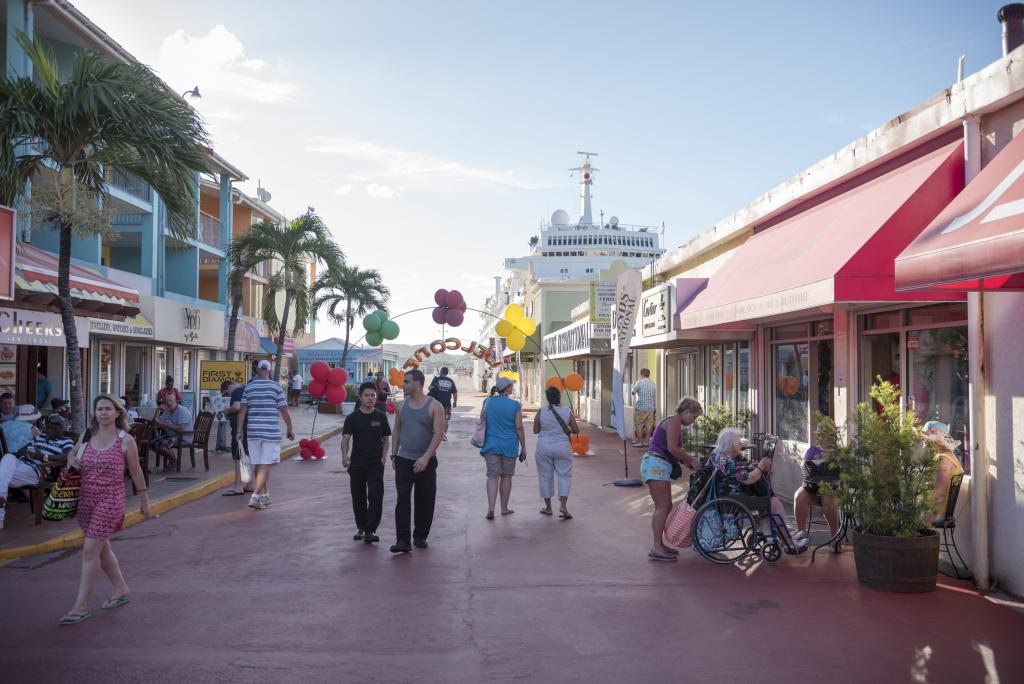
Many countries in the Caribbean and the Pacific were still recovering from devastating hurricanes when COVID-19 hit in early 2020, further crippling the tourism industry that many SIDS depend on as “an economic lifeline and driver of development” (Meddeb, 2020). On average, tourism accounts for more than 30% of total exports in the majority of SIDS, over 50% for some, including the Maldives, Seychelles, and Bahamas (Coke-Hamilton, 2020). In countries like Saint Lucia and Palau, tourism revenues make up 98% and 88% of total exports, respectively (Meddeb, 2020). In 2019, SIDS attracted approximately 44 million visitors and the tourism sector earned USD 55 billion in export revenues. However, in just the first four months of 2020, international arrivals were down 47% in SIDS (UN WTO, 2020). According to the latest data from the UN World Tourism Organization, Caribbean destinations, for example, experienced a 67% fall in international tourist arrivals in 2020 compared to 2019 (UNWTO, 2021).
SIDS appealed to the international community for financial assistance, warning that their economies were “in freefall.” They called for debt relief and increased financing to build resilience to climate change and other shocks and stresses, including COVID-19 (Rowling, 2020).
In part because of their unique vulnerabilities and the existential threats posed by climate change, SIDS have emerged collectively as a strong voice on the international stage.
SIDS in the International Arena
The 1972 UN Conference on the Human Environment (Stockholm Conference) was a watershed event where environmental issues, once seen as more localized problems for countries to address on their own, were acknowledged as transcending national borders and requiring international cooperation. Nowhere was this transcendence more prevalent than in SIDS.
Twenty years later at the 1992 UN Conference on Environment and Development (Earth Summit), the international community first recognized SIDS as a “special case” and distinct group facing unique social, economic and environmental vulnerabilities. SIDS successfully lobbied for consideration of the sustainable development of small islands in Agenda 21, the programme of action adopted at the Earth Summit. Chapter 17 of Agenda 21 (Protection of oceans, seas and coastal areas) recognizes the ecological fragility and vulnerability of SIDS due to their small size, limited resources, geographic dispersion, and isolation from markets. Paragraph 17.130 called for greater international cooperation and the first global conference on the sustainable development of SIDS.
This conference convened in 1994 and prescribed specific actions to help SIDS achieve sustainable development. The conference adopted the Barbados Declaration and Programme of Action for the Sustainable Development of SIDS (BPOA), which highlighted the need for international cooperation, especially with regard to finance, technology transfer, capacity building and information sharing. Follow-up conferences have since been held to review implementation of the BPOA, including in Mauritius in 2004 and Samoa in 2014.
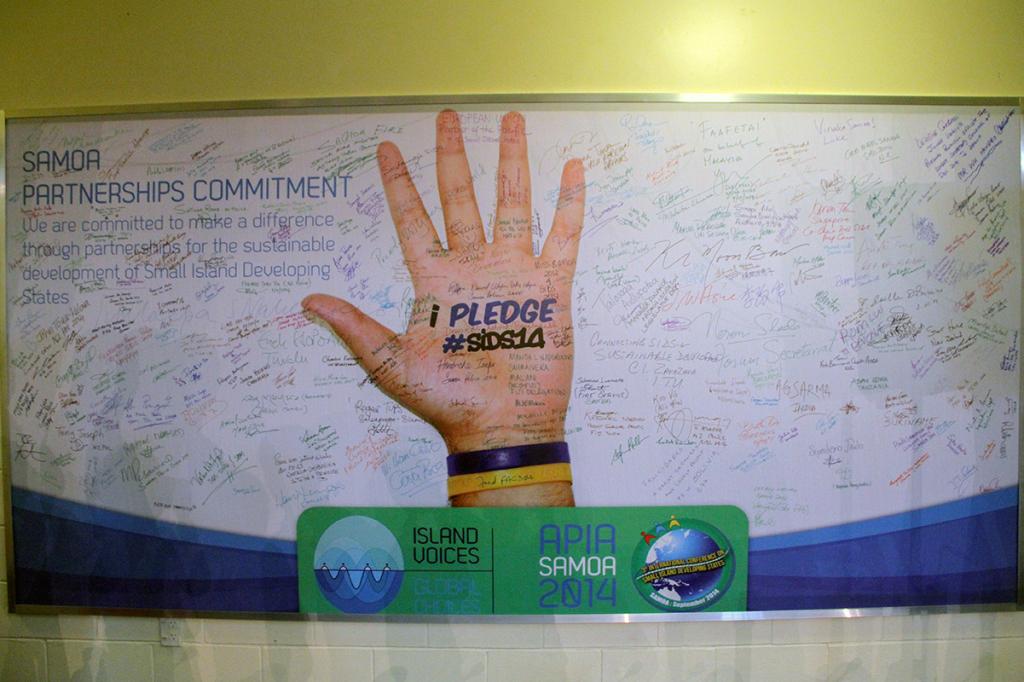
In 2012, the United Nations Conference on Sustainable Development (Rio+20) adopted The Future We Want, which recognized “Sea-level rise and other adverse impacts of climate change continue to pose a significant risk to SIDS and their efforts to achieve sustainable development and, for many, represent the gravest of threats to their survival and viability.” The 2030 Agenda for Sustainable Development and its Sustainable Development Goals (SDGs) emphasize the challenges of achieving sustainable development in SIDS, which are highlighted in the goals on education (SDG 4), energy (SDG 7), infrastructure (SDG 9), reducing inequalities (SDG 10), climate change (SDG 13), oceans (SDG 14), and partnerships (SDG 17). These include, for example, SDG targets 13.b (raising capacity for climate change-related planning and management) and 14.7 (increasing economic benefits to SIDS from the sustainable use of marine resources, including through sustainable management of fisheries, aquaculture, and tourism).
SIDS have effectively channeled their collective vulnerabilities to climate change to play a prominent role in international climate change negotiations. They created a coalition, the Alliance of Small Island States (AOSIS), in 1990 and successfully lobbied for recognition of the special needs of SIDS in the text of the 1992 UN Framework Convention on Climate Change (UNFCCC). Since then, AOSIS has worked to place adaptation on an equal footing with mitigation and to ensure funding to help countries adapt to climate change, through the Adaptation Fund and Green Climate Fund. Island countries played a critical role in getting loss and damage associated with climate change impacts on the agenda, including extreme weather and slow onset events. These efforts led to the adoption of the Warsaw International Mechanism for Loss and Damage in 2013. AOSIS also mobilized support around the need to keep temperature rise below 1.5°C and was instrumental in getting the Intergovernmental Panel on Climate (IPCC) to produce a special report on the impacts of global warming of 1.5°C. In 2015, at the Paris Climate Conference, the late Tony de Brum of the Marshall Islands helped bring together rich and poor countries in the High Ambition Coalition (HAC) to demand aggressive action, including “establishing a clear long-term goal on global warming that was in line with scientific advice.” The HAC successfully lobbied for inclusion of the 1.5°C temperature limit in the Paris Agreement. During the final day of the Conference, HAC leaders walked in “wearing coconut leaves on their lapels in solidarity with island nations” (Friedman, 2017).
The facts are clear: climate change is real; it is accelerating in a dangerous manner; and it not only exacerbates threats to international peace and security, it is a threat to international peace and security.
SIDS were among the first to call for putting climate change on the agenda of the UN Security Council. The potential of mass migration due to rising seas and more extreme weather events is of particular relevance to SIDS. Pacific Island countries have called for a UN Special Rapporteur on Climate and Security to help manage climate security risks and provide support to vulnerable countries to develop climate-security risk assessments. The Pacific Island Forum asked the Security Council to review implications for sovereignty and international legal rights from the loss of land, resources, and people. If, for example, the Maldives, the Marshall Islands, Kiribati, and/or Tuvalu, were to become nearly or fully submerged, forced migration could threaten peace and provoke a geopolitical response to such a loss. Strategically important military bases located on small island states are also at risk from climate impacts (Van Schaik, et al., 2018).
From Small Islands to Large Ocean States
SIDS have been defined by others and by themselves as vulnerable small islands with limited land, which has often affected their development perspectives and potential. Today, an increasing number are self-identifying as “large ocean states” to include the massive ocean areas and resources within their jurisdiction. Through these exclusive economic zones (EEZs), SIDS control about 30% of all oceans and seas. For example, Saint Lucia has a marine reserve the size of Germany (Cheney, 2021), while Tuvalu has an EEZ 27,000 times its land mass (Halais, 2019). The combined EEZs of Mauritius and the Seychelles represent an area bigger than India, with significant untapped economic potential (Cedras, 2020). Together, SIDS have around 24,111 km2 in total land area and 666,110 km2 in EEZs. In other words, 3.5% of SIDS is land, while 96.5% is ocean (UNDP, 2017).
The ocean and its resources provide SIDS with an opportunity to tap into the “blue economy,” a concept that ensures better stewardship of ocean resources by linking sustainable use and economic growth (Cheney, 2021). The blue economy covers all economic activities related to oceans, seas, and coasts, including aquaculture, fisheries, coastal tourism, offshore wind energy and ocean energy, and desalination (European Commission, 2020, p.2).
Danny Faure, former President of the Seychelles, called the blue economy the “next frontier of our development” (Cheney, 2021). Each dollar invested in the sustainable ocean economy will yield, on average, five dollars in return, according to a recent analysis undertaken by the High Level Panel for a Sustainable Ocean Economy (Konar & Ding, 2020). Expanding marine and coastal activities can diversify tourist-reliant economies, making them more resilient. For example, Saint Lucia is working with the Organisation for Economic Co-operation and Development (OECD) and the World Economic Forum to build a Blue Recovery Hub to share lessons with other SIDS seeking to leverage innovative finance to support their blue economy transitions (Chastanet, 2021).
If we are to be true stewards of our islands, all investment and financing into SIDS should be required to ensure that it is environmentally sustainable, socially inclusive and equitable.
In 2013, Mauritius launched a roadmap to tap into its EEZ’s potential by consolidating existing sectors, such as tourism, seaports, and fishing, and developing aquaculture, marine biotechnology, and renewable energy (Halais, 2019). On the heels of its 2018 Seychelles Blue Economy Strategic Framework and Roadmap, the Seychelles is implementing a marine spatial planning initiative to sustainably use its EEZ.
In 2018, the Seychelles launched the world’s first sovereign blue bond, mobilizing USD 15 million for blue economy projects that support sustainable marine and fisheries projects. Proceeds from the bond will support, for example, expansion of marine protected areas (MPAs) and improved fisheries governance (World Bank, 2018). In March 2020, the Seychelles secured the first-ever climate adaptation debt restructuring. Part of the country’s foreign debt will be forgiven in exchange for designating nearly a third of its ocean territory as MPAs (Nature Conservancy, 2020).
Reducing Dependence on Energy Imports to Meet Climate Goals
SIDS can also combat climate change while reducing their dependence on energy imports and vulnerability to external shocks by developing domestic renewable energy markets and increasing energy efficiency. Except for a few oil-producing countries, like Trinidad and Tobago, most SIDS depend on imported petroleum to meet their energy needs. As a result, many SIDS experience high electricity costs, supply interruptions, and vulnerability to oil price shocks.
Some SIDS have already started transitioning toward more sustainable energy sectors. The South Pacific island of Tokelau is meeting close to 100% of its energy needs through renewables, including by powering generators with locally produced coconut biofuel (Steiner, 2014). One of the world’s most ambitious energy transition projects is in Barbados, the leading producer of solar water heaters in the Caribbean. Barbados is committed to powering the country with 100% renewable energy sources and reaching zero carbon emissions by 2030 (Williams, 2020). Other SIDS have also set ambitious renewable energy targets, with Samoa, the Cook Islands, Cabo Verde, Fiji, Saint Vincent and the Grenadines, and Vanuatu aiming to increase the share of renewables in their energy mixes from 60–100% (IRENA, 2017).
An AOSIS initiative, SIDS DOCK, helps SIDS transform their energy sector and generate financial resources to address adaptation to climate change. Designed as a “docking station,” it connects SIDS’ energy sectors to the global finance market, sustainable energy technologies, and European Union and United States carbon markets to trade avoided carbon emissions and use the funds for adaptation projects. The International Renewable Energy Agency’s (IRENA) SIDS Lighthouses Initiative supports the transition to renewables-based and resilient energy systems. In 2020, Canada and the World Bank established the Canada-World Bank Clean Energy and Forests Climate Facility. The Facility will provide, inter alia, CAD 50 million to co-finance World Bank projects for renewable energy investments in SIDS and CAD 10 million in grant contributions to help SIDS pursue gender equality through women’s employment and enterprise development across energy value chains.
We should look upon SIDS as microcosms of our larger society, and not stand back and allow them to grapple with a threat for which they are largely inculpable.
Looking Ahead
On the international stage, SIDS have brought much needed attention to the plight of those most affected by climate change. SIDS have pursued innovative solutions to the pressing problems they face, but international cooperation and innovative financing approaches remain critical for their survival. For example, innovative financing instruments, such as blue and green bonds, and blended financing can help fund climate adaptation and resilience building, and sustainable development more generally. Debt swaps or debt restructuring can also help. In the Caribbean, the UN Economic Commission for Latin American and the Caribbean has advanced a Debt for Climate Adaptation Swap initiative that includes the creation of a fund to invest in climate adaptation projects and green industries to build resilience.
Sustainable development and combating climate change require an integrated approach that promotes economic diversification, energy independence, a sustainable tourism industry, and a blue economy. SIDS should continue transitioning towards a blue economy to make better use of the economic potential of their ocean and marine resources, including pursuing and developing their renewable energy potential.
Harnessing the potential of their ocean resources to develop in a more sustainable and resilient manner is vital for the future of SIDS, who remain, as James Alix Michel, former President of the Seychelles, so aptly put it “sentinels of nature and guardians of the oceans.”
Works Consulted
Cedras, A.V. (2020). Large ocean economies: A post-COVID narrative for small island developing states. UNDP Blog Post. https://www.mu.undp.org/content/mauritius_and_seychelles/en/home/blog/2020/large-ocean-economies--a-post-covid-narrative-for-small-island-d.html
Chan, N. (2018). “Large ocean states”: Sovereignty, small islands, and marine protected areas in global oceans governance. Global Governance, 24(4), 537-555. https://doi.org/10.1163/19426720-02404005
Chastanet, A. (2021). Unlocking financing for growth in Saint Lucia and beyond. World Economic Forum. https://www.weforum.org/agenda/2021/01/unlocking-financing-growth-saint-lucia-beyond/
Cheney, C. (2021). ‘Build back bluer’: Small island developing states pursue new finance mechanisms. Devex. https://www.devex.com/news/build-back-bluer-small-island-developing-states-pursue-new-finance-mechanisms-99043
Coke-Hamilton, P. (2020). Impact of COVID-19 on tourism in small island developing states. UNCTAD News. https://unctad.org/news/impact-covid-19-tourism-small-island-developing-states
European Commission. (2020). The EU blue economy report 2020. European Union. https://ec.europa.eu/maritimeaffairs/sites/maritimeaffairs/files/2020_06_ blueeconomy-2020-ld_final.pdf
Friedman, L. (2017). Tony de Brum, voice of Pacific Islands on climate change, dies at 72. New York Times. https://www.nytimes.com/2017/08/22/world/tony-de-brum-dead-climate-change-advocate.html
Halais, F. (2019). How small islands can harness the ocean economy. Devex. https://www.devex.com/news/how-small-islands-can-harness-the-ocean-economy-95290
International Renewable Energy Agency. (2017). Finding a way to transform energy on islands. https://www.irena.org/newsroom/articles/2017/Jan/Finding-a-Way-to-Transform-Energy-on-Islands
Konar, M., & Ding, H. (2020). A sustainable ocean economy for 2050: Approximating its benefits and costs. Secretariat of the High Level Panel for a Sustainable Ocean Economy, World Resources Institute. https://www.oceanpanel.org/Economicanalysis
Meddeb, R. (2020). How can small islands reimagine tourism for a green recovery. UNDP Blog Post. https://www.undp.org/content/undp/en/home/blog/2020/how-can-small-islands-reimagine-tourism-for-a-green-recovery.html
Nature Conservancy. (2020). Seychelles hits 30% marine protection target after pioneering debt restructuring deal. Press Release. https://www.nature.org/en-us/newsroom/seychelles-achieves-marine-protection-goal/
Omidi, M. (2009). Maldives sends climate SOS with undersea cabinet. Reuters. https://www.reuters.com/article/us-maldives-environment/maldives-sends-climate-sos-with-undersea-cabinet-idUSTRE59G0P120091017
Organisation for Economic Co-operation and Development. (2018). Making development co-operation work for small island developing states. http://www.oecd.org/dac/financing-sustainable-development/development-finance-topics/OECD-SIDS-2018-Highlights.pdf
Rowling, M. (2020). Hit by COVID and climate change, island states battle debt crisis. Reuters. https://www.reuters.com/article/us-climate-change-islands-covid-trfn/hit-by-covid-and-climate-change-island-states-battle-debt-crisis-idUSKBN265327
Steiner, A. (2014). Help small island states win their battle against climate change. The Guardian. https://www.theguardian.com/environment/2014/aug/29/small-island-states-climate-change-sea-level
United Nations. (2015). Small islands remain ‘humanity’s moral compass,’ leaders tell UN, urging action on climate change. UN Press Release. https://news.un.org/en/story/2015/09/510662-small-islands-remain-humanitys-moral-compass-leaders-tell-un-urging-action
UN Conference on Trade and Development. (2021). For heavily indebted small islands, resilience-building is the best antidote. https://unctad.org/news/heavily-indebted-small-islands-resilience-building-best-antidote
UN Department of Economic and Social Affairs. (2020). The COVID-19 pandemic puts small island developing economies in dire straits. Policy Brief No. 64. https://www.un.org/development/desa/dpad/publication/un-desa-policy-brief-64-the-covid-19-pandemic-puts-small-island-developing-economies-in-dire-straits/
UN Development Programme. (2017). Small island nations at the frontline of climate action. UNDP News. https://www.undp.org/content/undp/en/home/presscenter/pressreleases/2017/09/18/small-island-nations-at-the-frontline-of-climate-action-.html
UN Office of the High Representative for the LDCs, Landlocked Developing Countries and SIDS. (2013). Small island developing states in numbers. https://wedocs.unep.org/bitstream/handle/20.500.11822/9279/-SIDS%20in%20numbers-2013SIDS_IN_NUMBERS_121813_FA_WEB.pdf
UN World Tourism Organization. (2020). Small island destinations in critical need of urgent support as tourism plunges, UNWTO warns. News Story. https://www.unwto.org/news/small-island-destinations-in-critical-need-of-urgent-support-as-tourism-plunges
Van Schaik, L., Sarris, S., & von Lossow, T. (2018). Fighting an existential threat: Small island states bringing climate change to the UN Security Council. Planetary Security Initiative. https://www.planetarysecurityinitiative.org/sites/default/files/2018-03/Schaik_Sarris_Lossow_PB_Fighting_an_existential_threat_fin.pdf
Williams, J. (2020). How Barbados will reach 100% renewable energy. The Earthbound Report. https://earthbound.report/2020/12/01/how-barbados-will-reach-100-renewable-energy/
World Bank. (2018). Seychelles launches world’s first sovereign blue bond. https://www.worldbank.org/en/news/press-release/2018/10/29/seychelles-launches-worlds-first-sovereign-blue-bond
World Bank & UN Department of Economic and Social Affairs. (2017). The potential of the blue economy: Increasing long-term benefits of the sustainable use of marine resources for small island developing states and coastal least developed countries. https://openknowledge.worldbank.org/bitstream/handle/10986/26843/115545.pdf
You might also be interested in
Disaster Risk Reduction in an Unstable World
Successful disaster risk reduction requires both top-down, institutional changes and strategies and bottom-up, local, community-based approaches.
Indigenous Peoples: Defending an Environment for All
International environmental negotiations need to go beyond tokenistic participation of Indigenous Peoples to a genuine integration of their worldviews and knowledge.
A Warming Arctic is a Warning for the World
To protect the Arctic, stronger and broader local, national, and international measures to reduce greenhouse gas emissions must be implemented.
From Land Degradation to Land Restoration
Combating desertification, land degradation, and droughts can win socio-economic benefits for people in drylands and reduce climate change impacts.
